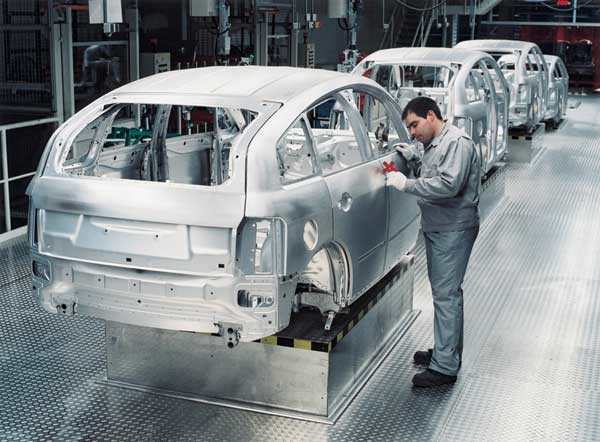Aluminum use in North American EVs will grow to 550 PPV by 2030, thanks to sustainable transportation
A report released by the Aluminum Association titled "2023 North American Light Vehicle Aluminum Content and Outlook" shows a robust demand for sustainable transportation will increase aluminium use by nearly 100 net pounds per vehicle (PPV) by 2030. A new survey by Ducker Carlisle, a global consulting and M&A firm, also cites that aluminum demand will grow through the decade's end, backed by electric vehicles' entry into the mass market.

"Consumers want cars and trucks that are more sustainable, more electrified and filled with more technology, and automakers are responding with a host of innovations, all enabled by high-strength, low-weight and infinitely recyclable aluminum," said Mike Keown, chair of the Aluminum Transportation Group and CEO of Commonwealth Rolled Products.
He added, "The aluminum industry is committed to ensuring consumers experience the performance and environmental benefits of aluminum as more and more vehicles are designed with the metal in the years ahead. Greater collaboration with automakers will bring to life this vision, set forth by the aluminum industry in its 10-year roadmap. And, as mega-casting and closed-loop recycling continue to advance, aluminum producers remain vital partners in helping automakers achieve aggressive carbon neutral targets."
The report, after collecting data from leading automakers, Tier 1 suppliers, and aluminum producers for the past eight months, suggests five key takeaways:
1) The number of battery electric vehicles (BEVs) will increase in the North American market, dramatically changing the region's light vehicle landscape. By 2030, battery electric vehicles, which on average are more aluminum-intensive, are estimated to exceed 36 per cent share of production.
2) Sales of larger vehicles with more aluminum content will increase, driving the aluminum market's growth. In 2022, light trucks outnumbered cars and contained 30 per cent more aluminum than the latter.
3) Strict carbon emission and miles per gallon (MPG) controlling targets will ramp up electric vehicle adoption and, therefore aluminum growth. Recent federal regulation is bringing in more stringent CO2 and MPG targets for 2027-2030, which will incentivize EV adoption and support aluminum growth.
4) Aluminum content per vehicle is expected to grow by almost 100 net PPV to 550 PPV between 2020 and 2030, up by 233% since 1990, when aluminum accounted for only 165 PPV.
5) Aluminum extrusion and sheet will be the two major products to drive the metal growth in transportation. The use of extrusions will gain 47 pounds per vehicle by the end of the decade, while auto body sheet and sheet for thermal management systems will increase by 41 PV.
AL Circle’s comprehensive report on “Global Aluminium Industry Outlook 2023” also pointed out that North America accounted for 21 per cent of the total aluminium flat rolled products usage in 2022. Among all the end-use industries, the transportation accounted for 15 per cent of the FRP usage, the second-highest after packaging. The report also distinctively noted aluminium autobody sheet which had been growing impressively before the pandemic is expected to resume growth with major automakers entering the EV space.
Abey Abraham, principal of automotive and materials at Ducker Carlisle, commented: "Electrification positively affects aluminum content and compensates for the transition away from powertrain and transmission components, which are primarily aluminum. As electrified powertrains create significant growth opportunities for aluminum, more stringent fuel economy standards also continue to promote mass reduction in ICE vehicles."
Additional information shared by the report include: 1) Battery housings, e-motors and drives, door sills and rockers will be the key EV components to drive aluminum growth. 2) Aluminum content in battery electric light trucks will average 644 pounds by 2030. 3) SUVs and pickups will account for 85 per cent of the BEV market by 2030.
This news is also available on our App 'AlCircle News' Android | iOS




















